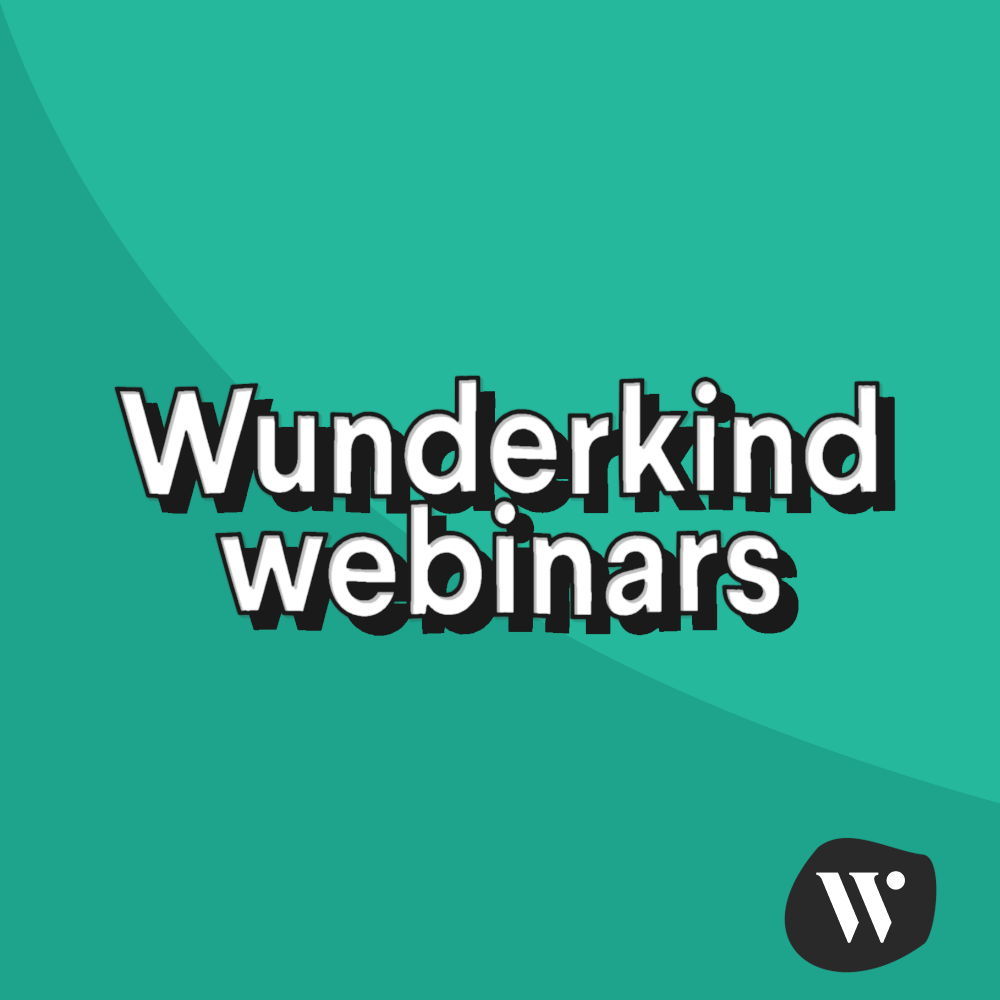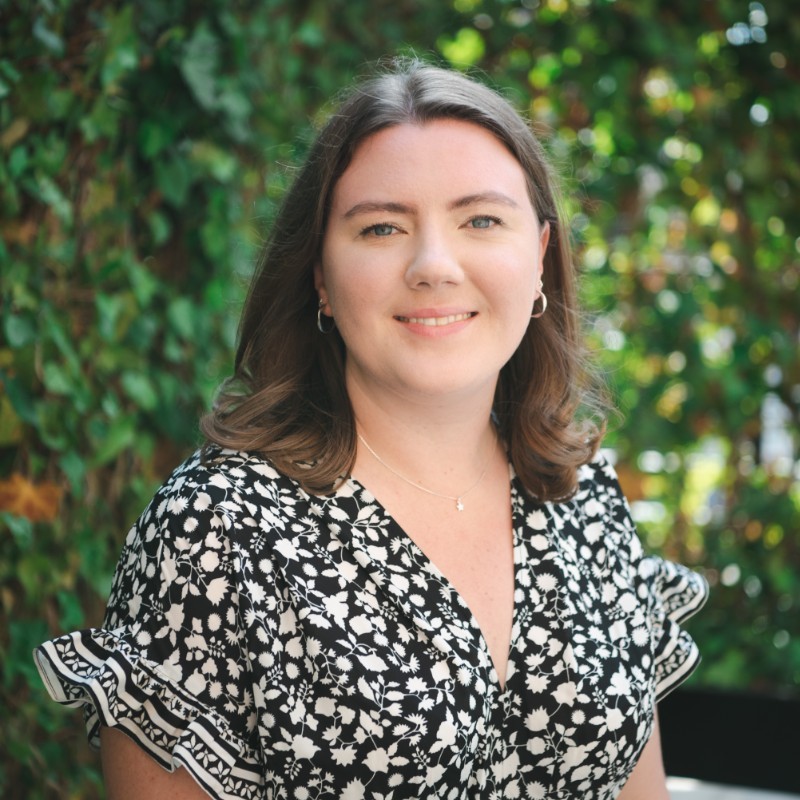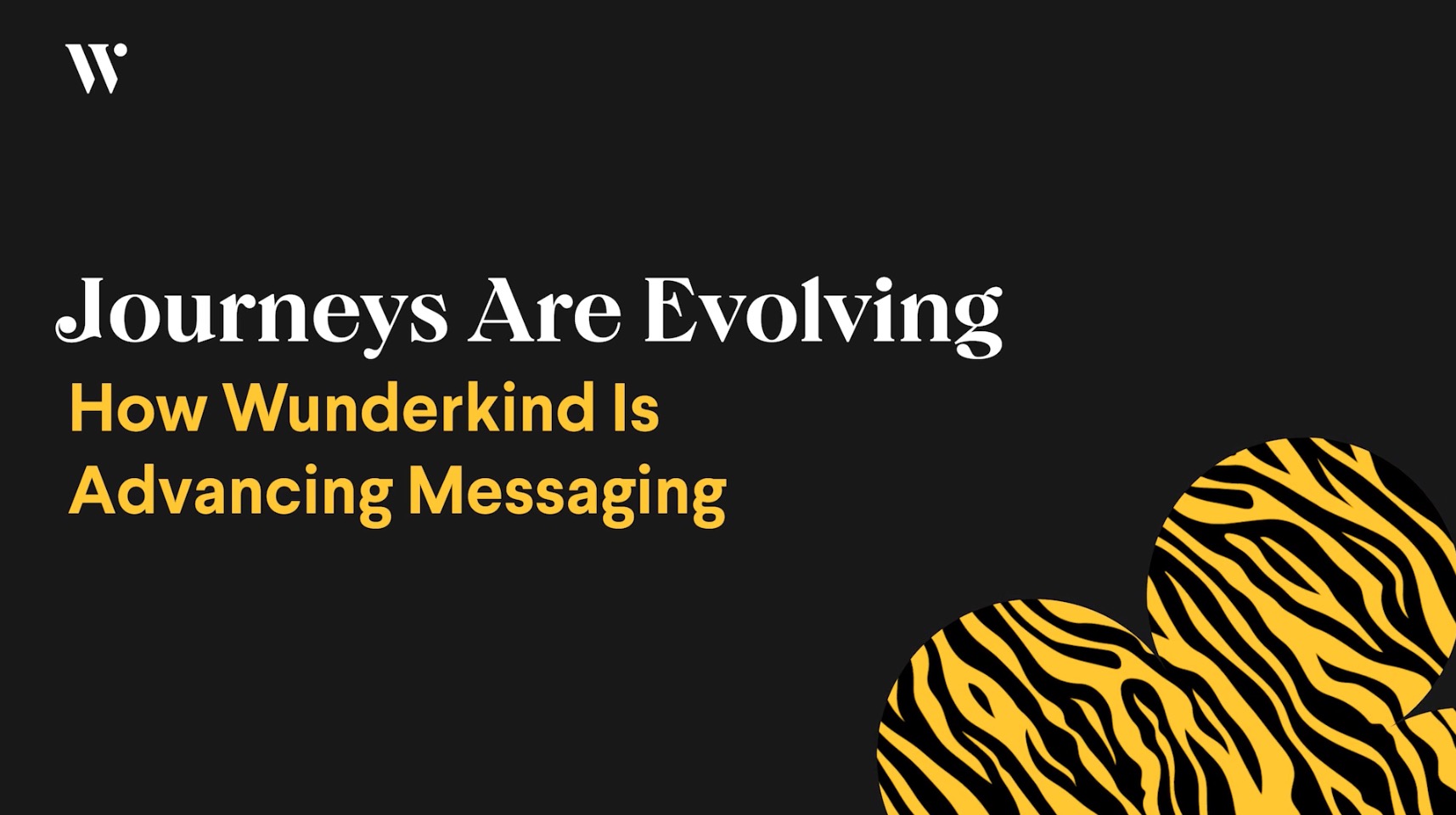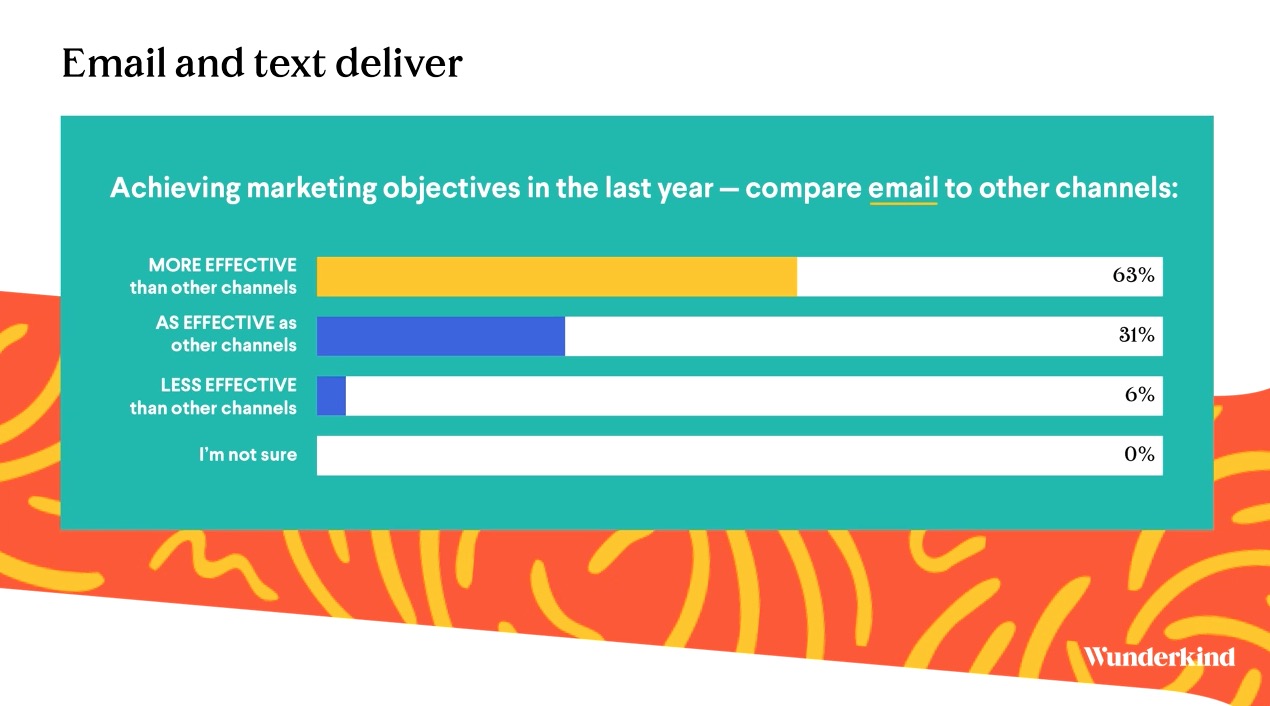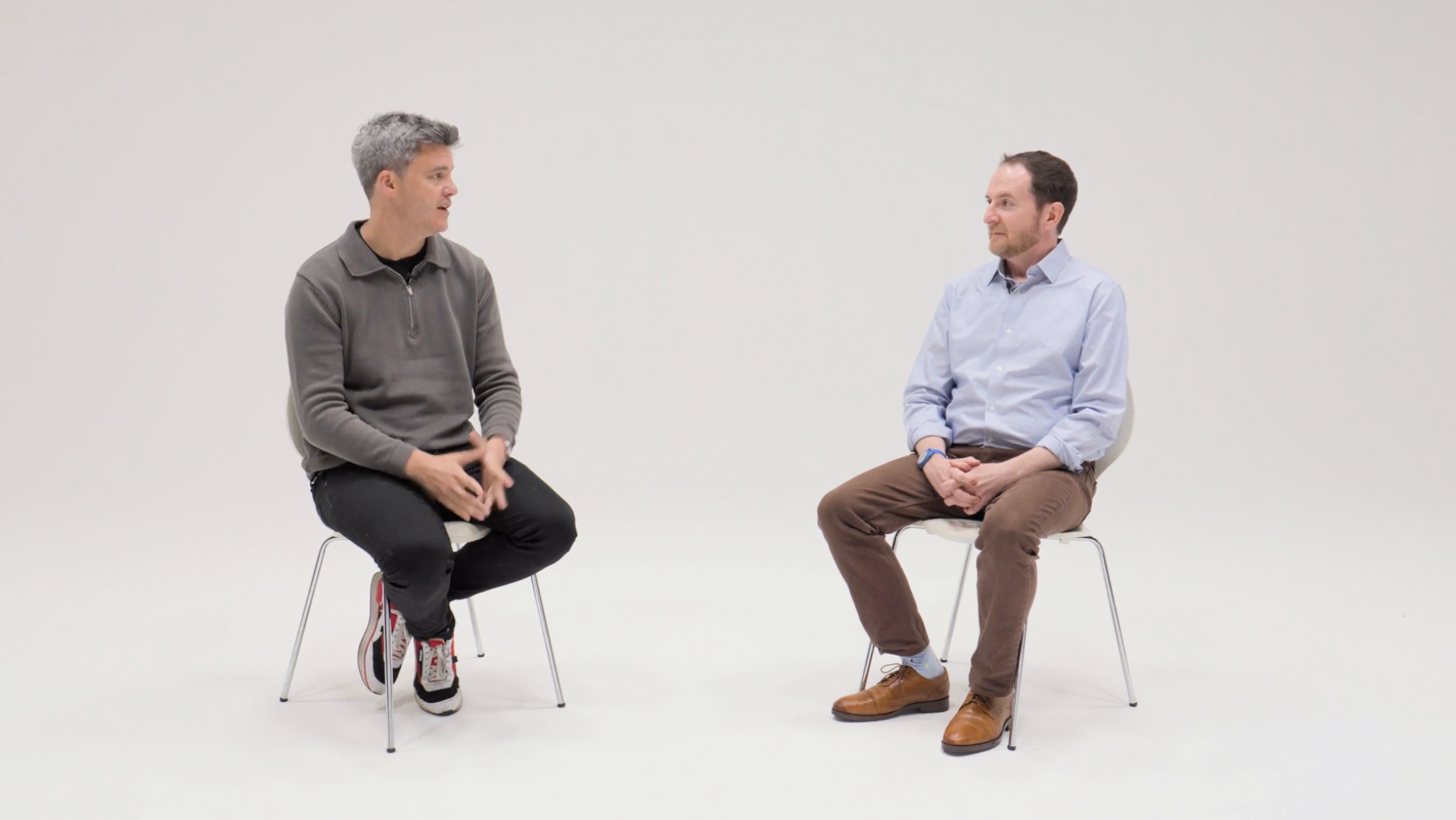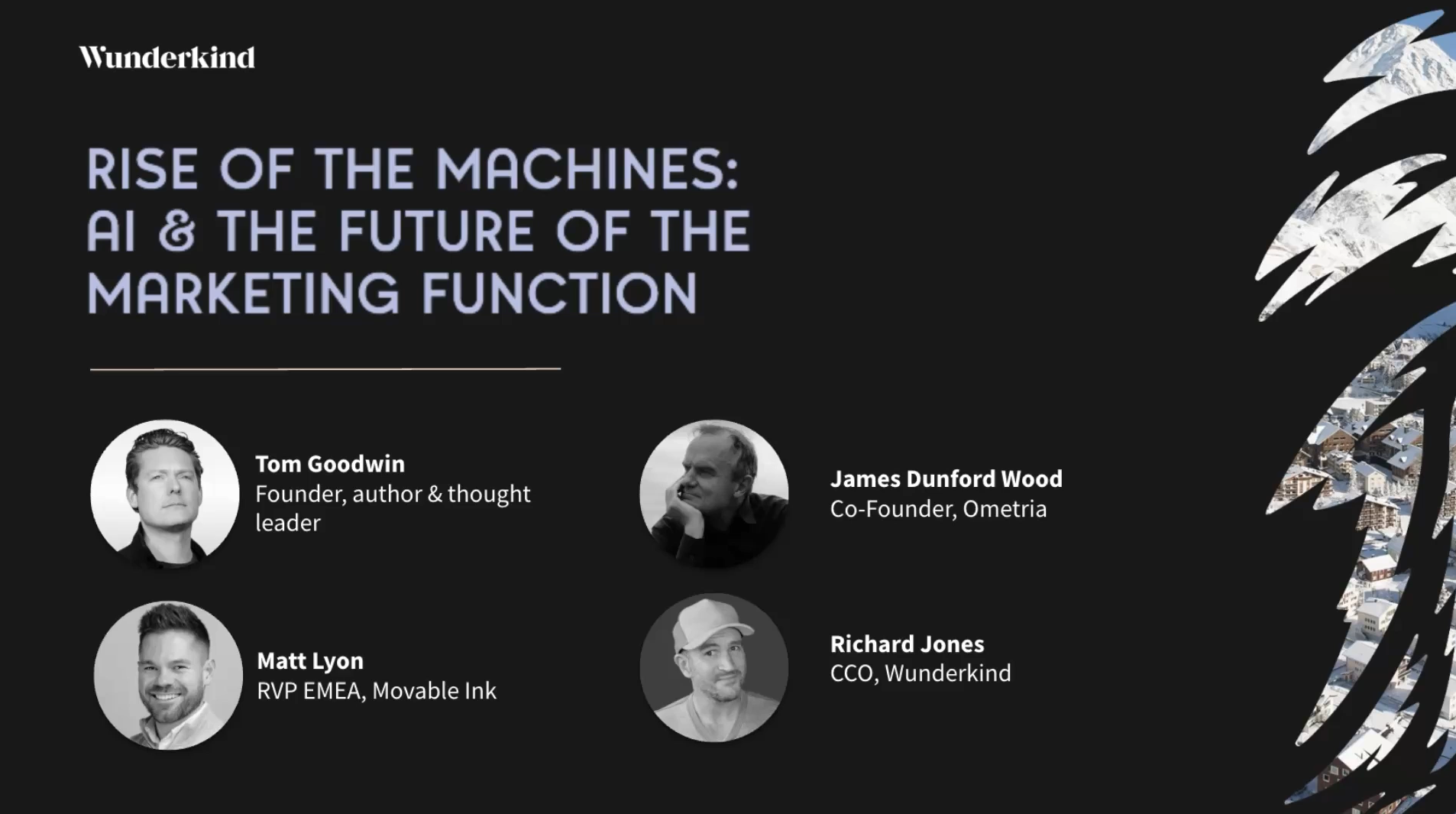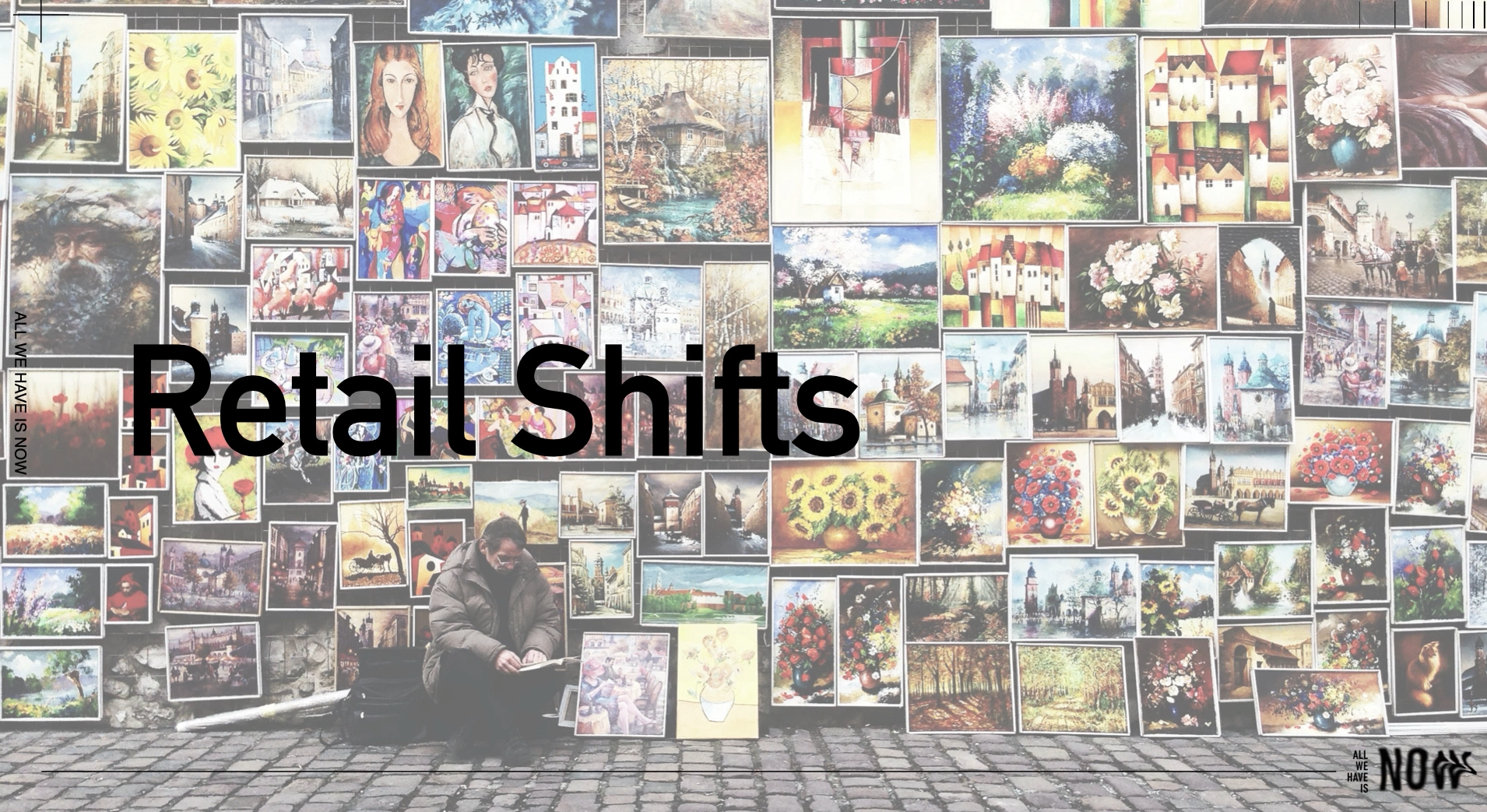Standing the Test of Time: Luxury Consumer Insights to Guide Your Strategy for Holiday 2023 and Beyond
- 0.5
- 1
- 1.25
- 1.5
- 1.75
- 2
Gemma Waters, Associate Director of Customer Success, International, Wunderkind: All right. Well, let's kick off then. Thanks, everyone, for joining us today on this webinar. The theme of today is actually going to be standing the test of time. We're going to be exploring luxury consumer insights and really discussing how to guide marketeers strategies during the holiday period and beyond. I want to say thanks to Contentsquare and to Brian today for joining. Great to see you.
Brian Strauss, Global Vice President, Solution Consulting, Contentsquare: My pleasure. Thank you for having me.
Gemma Waters, Associate Director of Customer Success, International, Wunderkind: Perfect. Well, let's kick things off. So we're going to start off with a little agenda. So today, we're going to be covering a couple of introductions, obviously to who we are and also discussing some of the findings from our consumer survey that we undertook and some key takeaways as well. And then what we'll be doing is covering some insights from a partner success story that we have. So without further ado, I'll kick off some intros. So just an intro to Wunderkind first. So we're a leading performance marketing solution that really aims to scale the one- to- one messages that brands are sending to consumers at scale really. So what that means is we are able to remember who site visitors are better than before working with us and allow brands to deliver high performing one- to- one messages across various different channels including their websites, emails, texts, and also ads as well. And in terms of me, so my name is Gemma Waters. I'm an associate director of customer success here at the international business based in London. So I've actually been here just over four and a half years working with various brands across the EMEA region. And I'm very excited to have this chat today. So I'll pass over to you, Brian for the next one.
Brian Strauss, Global Vice President, Solution Consulting, Contentsquare: Thank you, Gemma. I appreciate it for the opportunity to be here and to talk about Contentsquare in the context of some of our favorite customers. So a bit about me, I've been in the space about 20 years, so it makes me an absolute dinosaur. But my day job is that I now run a global organization or on the solution consulting for Contentsquare. So ostensibly pre- sales and I think the rubber meets the road where our customers... How does this really work? How do we really organize? I think my job in general is after being here, is just to make this as practical and as effective as possible and sort of demystifying some of the buzz topics and kind of typical stats that you see and really talk about how do people really operationalize this from a practical, plain- spoken way. So happy to be here, excited to share a little bit about what we do in the context of some of our customers in the holiday season.
Gemma Waters, Associate Director of Customer Success, International, Wunderkind: Perfect. Great, so I guess, we wanted to tie together obviously both of what we do and why that's relevant, especially in today's world. So really, what we're focusing on here is how we support brands to really ensure they have good insights into all of the user behavior that is going on their website at any given time. So what we are doing on the Wunderkind side obviously is pairing that behavioral campaign data with the insights that you guys are able to draw from the various different sources on a website. And what that means is that then brands can use that to inform changes to various different pieces of messaging or designs or content on their site to make it as frictionless as possible when a user is trying to purchase, which is ultimately what we're all hoping for. So when we work together, we're really making sure that brands receive those in- depth insights. So there are three elements to this. First of all, pairing our campaigns as I mentioned with those insights, but then allowing us to I guess understand a user's behavior that then helps us to unify that data across all the different marketing channels and hopefully pull together more of a holistic optimized view. All right, well, let's move on to just a bit about some of the insights that we have drawn from the survey that we conducted. So Wunderkind essentially had a look at some real consumer data around spending, specifically luxury spending. So just to summarize where all this data has come from, we took 500 consumers who were surveyed with a 50/ 50 split across the US and the UK and that really covered all different ranges in terms of gender, that was obviously across market. There were different countries within that, age ranges, ethnicities and jobs, everything is covered. And we also ask them various questions around specifically their sentiment towards luxury spending, luxury brands and specifically around this area of economic uncertainty that we're in right now, what impact is that having on consumers, if any, to try and understand their likelihood of purchasing, especially when it comes to luxury. So that's really where we started off and we want to pull out some of the key findings there and then would love to hear your reflections on some of those after as well. So starting off with the first one, we had a look at, I guess, just generally how people were feeling about their personal economic outlook this year. We wanted to understand how likely are people to spend this year compared to last year. Obviously we're in this couple of years now post- COVID and we're trying to understand what does this market look like at the moment. So we actually saw that 70% of consumers are confident about their personal economic outlook this year. So that's I think really optimistic when we're thinking about luxury and the fact that brands are still trying to keep those loyal customers there, but also trying to acquire new ones as well. So that's really promising. But also on top of that, we saw that in terms of their actual shopping habits, they were expecting to spend kind of somewhat more or much more compared to last year. So these are definitely positive signs, obviously this is what people are saying they're going to do, but it's a good indication of what this might look like towards the end of the year, particularly going into this peak period that we're in at the moment. So that was one of the key findings that we had. In addition to that as well, we saw that when we look at some of the key driving forces behind why people are purchasing in the luxury space, we saw that not only people are willing to spend on luxury items, but also nearly a quarter of consumers actually saw luxury purchases as an important part of their personal expression, which is quite interesting actually. And what we found was an overwhelming majority of people cite the tailored digital experience that they had with the brand online as very influential in their purchasing decisions, which I think in this day and age isn't surprising, but it's good to see that this was something that was picked out by the people who answered this survey. So I guess, moving on to what that means specifically for brands that are trying to really continue the momentum in this key time of the holiday season, we wanted to pick out a few findings. So I think one of the things that's positive is that the report suggests that brands can go into this season with an element of confidence and that people are still willing to purchase on those high price items so that it's really important that we plan for that and we make sure that we are treating these users as if they're in a shop. And they're kind of getting that luxury premium experience online, taking that omnichannel approach. But the good news is that the sentiment seems positive, which is great.
Brian Strauss, Global Vice President, Solution Consulting, Contentsquare: Yeah, I mean, I think part of it is that obviously we've moved away from buying sweatpants and buying some things for home and we're moving back into a world where if you talked about expression. We're in front of people again, we're going to holiday events, we're getting back out into the world. And so, it makes sense that there we see increased urgency around the luxury spend and I think that's really typical. I think from my standpoint, from our standpoint, there's a word that flies around a lot when you talk about either premium experience or where you talk about just experience in general as people often talk about personalization with a capital P. And in our world of analytics, we use experience analytics that often refers to a very specific item of marketing specific products to something that someone might actually buy either from a data- driven perspective based on previous browsing experiences or previous purchases either online or offline if you're sophisticated. And that's certainly a good piece. But the thing is that I think what luxury is starting to understand and what I think Contentsquare customers are starting to understand is that personalization needs to segue to experience as well. So you have to remember that one of the odd things that we all kind of take for granted about with customer experience that we don't really think about is that users, customers are alone in these luxury stores trying to make their way through all of the marketing and all the aisles and sorting through all the products on their own. And then once they decide that they found something that they want to purchase, they then need to go and work the cash register by themselves then. And no matter how well we design that cash register, it's different from every other one sort of in the world. So there's lots of opportunities for people who are uninitiated to that to find friction, everything from product questions and not understanding marketing jargon to how do I actually get through this process now that I've decided I want to buy?
Gemma Waters, Associate Director of Customer Success, International, Wunderkind: Yeah, that's a really important point, isn't it? Because I think we see that as well in terms of meeting the customer where they are or the user where they are trying to really make it as simple as possible. Because you're right. They're used to so many different types of experiences when it comes to the digital age we're in now. You've really got to kind of handhold them and guide them through that. And we definitely see where you are able to speak to them based on their latest behavior in the most meaningful way at the right time. That's where you see you say those optimizations, inefficiencies and conversion and engagement. So really an interesting point. Okay, great. Well, let's move on to the third finding that we have from the report. So this is regarding actually what users see as the brand source of truth or where is the most trustworthy, I guess, channel or platform that a brand could be putting themselves out there on? So this was quite interesting to see that actually the kind of owned channels, so things like a brand's website and their emails came up really high in terms of the trustworthiness here. So not really surprising, especially when you think about the luxury space, they want to know exactly what they're getting. So a brand's website is really important and especially when we think about email as a channel, that came up really high. I think what's interesting as well is text was actually higher than search ads. So in terms of the focus being on own channels in this kind of post cookie world that we're moving into, I think that's really interesting that that's actually come up higher than some of the traditional channels that we think of. So I guess, with that in mind, we wanted to draw some of the key takeouts here. So I think as I said, consumers are seeing a brand site as a key source of truth. So like they would with an email and I think brands who leverage important messaging in their key owned channels are going to be able to capitalize on that high intent traffic that's coming to site during this really key time of year. It's really important that brands realize that consumers are looking for that and if they can be there when they need that information, then that will hopefully go a long way, especially during the holiday season. And I think although consumers expect to receive quite a lot of communications during this time, I think especially in the luxury space, brands should be considering their messaging and really tailoring to your point around personalization, tailoring as much as possible based on what we know about them. So really taking that omnichannel approach and as I said earlier, thinking about that premium experiences being not only in the store but also online as well and making sure those digital touch points are really consistent. So that's kind of my take on that finding. What are your thoughts?
Brian Strauss, Global Vice President, Solution Consulting, Contentsquare: I think I'm not surprised by this at all. I think what you see is that when somebody's going through an experience comes out having bought a product, I think that there's a multifaceted experience, right? One is you talked about the importance of social media was in there as well. So when the algorithm as it is, whether it's on Instagram or another channel, it does a very good job of figuring out our age group, our cohort, what we're interested in, etc. And what we're seeing more and more is that the first phase, especially in luxury or in lifestyle brands in general, you've got to get the customer to identify with this brand even before they're looking for a specific product. And putting in ads in the context of what targeted cohort ads, even though we're moving away from cookies in the context of what reels I'm looking at or what other interests that I have is a fantastic way to begin that process. I think then when you look at email, what we're seeing is once you've got that piece of data from me that says, " Hey, listen, I'm open to getting offers from you, I'm open to the kind of personal desired journey that we've talked about." And so, unsurprisingly, when you then reach out with potential products that I might be interested in, no surprise that that's a great starting point for many journeys. And then I think the game is really at that point, how do we present the most easiest path, the most attractive path in front of those users? How do we learn from the people that are being successful through our site, right?
Gemma Waters, Associate Director of Customer Success, International, Wunderkind: Yeah, definitely. All right, well, let's move on to this final finding that we have from the presentation and perfect. So I guess, what we wanted to do just to wrap this up, wrap is to have a look at the loyalty piece as well. So we obviously know that especially at the moment, brands aren't just focused on acquiring new customers, which is obviously important, topping up the top of the funnel. But also making sure that first time purchaser does become a second, third, fourth time purchaser as well. So what was really interesting was when we asked people about whether they agreed about different kind of statements around brands, what we actually found that was that quite a lot of consumers are actually open to trying new brands, but that largely they tend to stay to their favorites. Although there's that potential being open to it, we are creatures of the habit at the end of the day, so that's what people are really focused on. But that being said, there is definitely an opportunity to target and acquire these new customers because this segment is kind of interested to understand about new brands and I think particularly at this time of year when people are coming in browsing mode that they're potentially open to hearing from new brands as well. So I guess, what does that mean for marketers at the moment and what can we suggest? So I think loyalty is really important at this time of year. As I said, it's actually a key opportunity to try and ensure that potential customers are finding the information they require quickly, easily, and also being able to, as I mentioned earlier, capitalize on that influx of traffic that's coming to site. And certainly what we see is we're able to identify more of that traffic and then that allows brands to retarget them even if they're not able to purchase at that very moment, it gives them an option then to speak to them later, which is really important when you have lots of traffic coming to the site. And I think also brands at this time of view, they should consider the long- term customer behavior that they're trying to encourage as well. So by retargeting them with the right message based on the latest behavior that they took and nurturing them down the funnel in a way that is appropriate to the brand and in line with the brand experience that a certain premium retailer, for example, wants to have their users experience, I think they can then become second, third time purchases. So yeah, definitely lots to consider I think coming off the back of the data that we saw there.
Brian Strauss, Global Vice President, Solution Consulting, Contentsquare: So building on into lifetime value and retaining these customers by being even more targeted, not just from products but from we know just like if you and I were running a mom and pop kind of brick and mortar operation, if I was the proprietor and Gemma, you were coming in time and again, I would get to know you and I would be able to understand your cues and when you're ready for help and when you need help and when you take suggestions. And I think we're at the point now where we can do that, especially on the luxury side.
Gemma Waters, Associate Director of Customer Success, International, Wunderkind: Yeah, definitely. Okay, great. Well, that wraps up the findings of the report and some of the key takeaways there. So want to now move on to the success story element and actually a mutual partner that we have. So today, we're going to talk a little bit about Hotel Chocolat and a little bit about some of the challenges first of all that they faced recently prior to working obviously with Wunderkind and Contentsquare. So just a little bit about them. They're actually a traditional British retailer over here in the UK and they have a lot of brick and mortar stores, but also an online presence as well and very much positioned themselves as a premium chocolatier. But they're working both in the UK but also they operate internationally as well. So I guess, with all of that said, we wanted to then talk about some of the ways that we were able to help them. So starting off with some of the things that we did at Wunderkind, as I said, we were really tasked with increasing their database essentially to make sure that their email channel was as healthy as possible, really trying to scale up the number of people that they could speak to and ultimately the revenue from that as well. So during the time that we've been working with them, we've driven over 12,000 new emails being added to their list, which is actually really positive considering they are a premium brand and they took quite a refined and paired back approach to data capture. So we're pretty excited to see that that's kind of grown quite significantly. And then also what's quite an interesting thing to note as well is that we've seen that the number of site users that they have that we're able to identify down to an email address has actually increased from around 8% to 40% since working with us. And this is really just down to the identification technology that we really underpins everything we do here. So that was pretty exciting to see those results. And then, I guess, as a kind of follow on from that, as a result of that, we have been able to scale the email channel itself as well. So we've been able to see some increased metrics in terms of our contribution to their total digital revenue. But also in terms of the actual conversion rate, which was an area that they were struggling with. So we know that when we're able to encourage users back to the site, we see a 12.5% conversion rate from those who click through Wunderkind email. So that's definitely really strong, especially in the luxury space. I think that's definitely a strong metric for them to be proud of, which is great to see. So I'll pass over to you, Brian, just to go through some of the Contentsquare impact.
Brian Strauss, Global Vice President, Solution Consulting, Contentsquare: Yeah, I mean, one of the things I love about this use case is that it sort of has a kind of an operational trifecta. Usually what it is and what I mean by that is on of the three aspects of the trifecta is how do we actually model what a good experience? So one of the things that they were... In order for you to improve, you don't just look at where a bad one is happening, you also look at what are the key things that successful users are doing and so that we can try to expand on that. So they were seeing that they had a lot of people were going from blog posts right into PLPs into product landing pages. So one of the outcomes from that was how do we increase other segments of users to do that? And so, they sprinkled in more direct links to make that happen and that led to a decrease in bounce rate. And that's a big part of what Contentsquare does is we help you figure out whether it's for AB testing or reducing bounce rate or what are the elements that are most attractive on your website now in your journeys now so that you can expand those to other users and segments so that they can go deeper and hopefully add something to their basket. And then we talk about friction or I think in the blog post they talked about reducing rage clicks. This is so important and that's actually when we say rage clicks or friction, this is an incredibly operative word because if you ask somebody today in many cases whose job is customer friction? A lot of times that gets mistaken again in what I was saying, which is more of an IT kind of thing, performance and errors. But honestly, that's not really what it's about. It's really about how do we understand things we don't already know about that our customers are running into. And so, it's being open to the idea that even this thing, as I mentioned before, that's working just as we designed it may still be confusing to some customers and to some segments, a lot of things that you can just learn by making little incremental improvements. So it's both conquering the forward- looking and how do we model good journeys and make things more attractive, but also how do we respond quickly to the little things that customers are telling us they're running into right now. And then the other one, which I think is one of the biggest opportunities in e- commerce, they talked about friction within the Contact Us form. So funny, think about it, if you were in a store, a luxury store, let's just pick Tiffany's for example, and you were looking at a ring. If you had product questions, you wouldn't want to have to leave the store and go outside and call the Contact Us phone number. You want help exactly where you are there at the case with somebody. So I think that when you look at what Contact Us optimization looks at, and certainly what Hotel Chocolat was focused on here was making sure that just filling out the form was optimal. But what you're seeing is that... And this is where I think the biggest opportunity, not only for this customer but for brands in general is how do we answer the fact that 30% of customers at least to come in to the buying journey, are going to have questions and how do we kind of intercept that before they even need to channel shift? How do we leverage the insights around hesitation to probably position something that's going to help them prevent them from going to Contact Us and having to fill out that form in the first place. It's really, really great for them to see a brand like them open to doing that kind of thing. And I think it's key to them being successful in a post pandemic post Amazon world.
Gemma Waters, Associate Director of Customer Success, International, Wunderkind: Perfect. Well, I think that brings us on to kind of rounding out this section. So I'm keen to hear from you, Brian, what you think we can learn from, I guess, specifically this brand, but also what does that mean for other brands out there?
Brian Strauss, Global Vice President, Solution Consulting, Contentsquare: Yeah, so I think we talk about invest in your tech stack and the right partners and what I think that really means from my perspective is how do we break down some of the silos in an organization? So a lot of times there's an investment in a lot of different software packages out there as I talked about, but then they're all working on their own missions. And this isn't just a plug for folks to buy more software with Contentsquare, but I think even without Contentsquare, I think that there's a lot that folks can do by saying you know what? What we really need to do is work together and realizing that the customers alone in the store, so let's start with that. And so, what that means is we need to be able to respond to friction either at the individual level or at the segment level. We need to know when it's happening as soon as possible. We need to have somebody that's in charge of kind of running that to ground, whether it's with Contentsquare or with something else. What does it even mean when somebody's encountering friction or when they say they had a bad time? Realizing that there's margin and reducing that friction, what happens then to those folks propensity to buy and kind of bringing that home for us. And what we see is when you're able to reproduce an issue, you can emotionally empathize with the customer just like you would back in the store. So this is really about removing the digital barrier and how do we get to empathize with our customers. It's not just about buying software and throwing that at the problem it's about yes, investing in your tech stack, but I would say maybe a third point would be putting together a cross- functional team to be able to do this. And so, that bleeds nicely into part two, which is that certainly you need to have particular integrations to do this work. So as I mentioned before, you might integrate one real simple one might be a lot of times companies have surveys and they're using them for NPS and they're using them for that kind of stuff. They're also fabulous awareness mechanisms for when customers are counting friction. So having that integration with something like Contentsquare is one of the easiest and most ROI rich use cases that we possibly have. Someone gave us bad feedback, let's find out what happened, let's quantify that experience, let's fix it. So I think that's another great example.
Gemma Waters, Associate Director of Customer Success, International, Wunderkind: Yeah, definitely. It's really good to, I guess, understand what can happen when a brand is open to doing that to not only like you say, how they're going to do it, but also the resource as well because I think that's the key thing, that change management piece that we mentioned. Great. Well, it was really good just to chat through Hotel Chocolat, how they have, I guess, been able to combat some of those challenges that they're facing that we mentioned at the beginning. But we'd love to move now just to more broadly wrap up this session as well, just to talk through some of the key takeaways and considerations that brands should have top of mind when they're going into this holiday season, but also for the remainder of the year and beyond really. So I guess, a couple of things that come to mind to summarize are obviously we talked about the consumer journey being really important. And actually, some of the results showed that a website is really seen as a source of truth for consumers and really, you can think of it as your best sales person. So making sure that when that additional traffic comes to site, when all eyes are on you as a premium brand, that you are able to make sure that you can figure out who those people are and speak to them in a way that really mimics that premium in store experience to hopefully build that loyalty that we mentioned as well. And then secondly, I think nurturing customers as well through the journey. So continuing to make sure that you are taking a tailored approach, I think particularly in the premium space that's what's expected now, and making sure that messaging is as personalized as possible based on their interests. And hopefully that will mean that people become repeat customers and also that they'll then hopefully provide a great lifetime value for the brand. I guess, do you have any other key takeaways from your side, Brian?
Brian Strauss, Global Vice President, Solution Consulting, Contentsquare: No, I would just add that honestly, the frontier for Contentsquare in terms of where we're pushing the envelope and working with our customers is when you talk about either retargeting or you talk about building on journeys is how do we leverage these analytics in real time to ease the customers through that journey, but also to build on previous experiences. We would love to see websites understand the fact that it's natural for users to the buying journey may take several sessions that may be just a very natural way of consuming an expensive product. And so, having the ability to optimize each one of those steps, like if we know it takes three visits on average for somebody to transact, let's optimize each of those experiences and have what we want out of that and make sure that there's KPIs that we're measuring for each one. The first journey we want is going to be on the mobile phone and we want them to get to a product landing page, fantastic. On the second one, we really want them to compare products and add it to their cart and hopefully by the third journey that they're transacting and able to successfully work the cash register by themselves. And potentially that leads to a fourth where we're able to come back and say, " Hey, welcome back. How's that product working out? Here's a complimentary thing that might go with it." And then building on that for the long term. So it's a combination of everything to sort of, again, how do we use digital to replicate the experience that someone might get in a small, intimate brick and mortar environment.
Gemma Waters, Associate Director of Customer Success, International, Wunderkind: Yeah, definitely. I think that's definitely a key theme, isn't it? Linking those two experiences and there's things we can probably take from both that the other could benefit from as well. Perfect. Well, I think that takes us onto our Q& A section. So I know we have a few questions that are coming up in the chat, so I'll probably just take one and then we'll see who's best placed to answer. So it looks like the first one is probably for me. So the question is can you provide some examples of strategic opportunities or tactics that a luxury brand could implement that would allow them to capitalize on the consumer's economic confidence that we talked about at the beginning of the session? So I would say, I guess, just at a high level, really what we're trying to do when we work with a brand is to make sure that we have a focus on the creative and the branding aspect of what we're doing to make sure that it's as luxury and premium as possible. We know that's super important to maintain that brand integrity, especially during the holiday period, but all year round really. We want to make sure that a user's online experience, as I mentioned earlier, really mimics in store and that it's that strong brand presence is key. I think that's how you build that loyalty and especially when people are saying that it's a key part of their personal expression, as we mentioned earlier, we want that brand presence to be strong if that's what they're associating themselves with. So that's definitely what I would say the luxury brands can think of when they're going into the holiday. And then it looks like there's another question for you here, Brian. So the question is how do you make sure your organization is pulling in the same direction to make sure that it's as frictionless as possible? So basically how do they break down silos? It comes back to your point you mentioned earlier.
Brian Strauss, Global Vice President, Solution Consulting, Contentsquare: Yeah, and this I guess, is a tip not only for folks on my shoes that are aspirational about selling software to an organization, but when you talk about ironically, these brands themselves and their abilities to make an impact, realizing that you're not going to analyze your way out of this, meaning one group of people isn't going to be able to make the huge change. What it's really important is when companies have their specific seasonal or yearly initiatives that we use our organization and reposition it to go after those. And that sounds simple to say, but what it often means is making sure that the executive is involved to some degree in these tactical operations. My point is that we all get very focused on and well- worn ways of working on a day- to- day basis. It starts with linking that executive that has is either a bonus or something is tied to them helping the company move in the right direction and getting them to be like, okay, great. So then we're going to show you how you can turn up to a weekly or a semi- monthly meeting where we're going to review the top opportunities that we've generated from the users that are on our site through something like Contentsquare. And we're actually going to bring in not only analysts, but analysts, developers, design folks. So you can see what I'm saying. It's breaking through those silos where usually people are working independently in their own world. No, we're going to bring everybody together to represent the customer and where they want to go, and we're going to make decisions together. And then we're going to hold ourselves accountable by multivariate and AB testing our results. And then we're going to tell our stories about how we've improved the customer to the C- Suite company at large to keep ourselves honest.
Gemma Waters, Associate Director of Customer Success, International, Wunderkind: Yeah, I think it's hard to make that big change, isn't it? If you're working in silos, like you say. And also if you have that awareness, then you'll have people who are working on other projects and other parts of the business that will then have that context of what you're working towards. And I'm sure that knowledge sharing comes with a lot of benefits as well, so interesting. Great. Well, I think that's a nice note to end on. So I guess, we can definitely wrap that up. But I really appreciate you taking the time, Brian, and joining, and thanks everyone for the time. And I also hope everyone has a very successful holiday period until the end of the year, thank you.
Brian Strauss, Global Vice President, Solution Consulting, Contentsquare: Good luck!
DESCRIPTION
Join us for a webinar hosted by Wunderkind and Contentsquare, featuring industry experts who will delve into valuable consumer spending insights. Explore how these insights can serve as a compass for your luxury brand. Throughout the session, gain valuable knowledge about consumer expenditure on luxury and high-end products. Discover strategic approaches tailored for the post-holiday shopping season of 2023 and beyond into the new year. Benefit from shared past successes by Wunderkind and Contentsquare, providing valuable guidance to navigate the remainder of the year.

